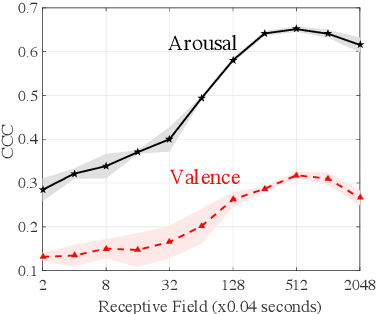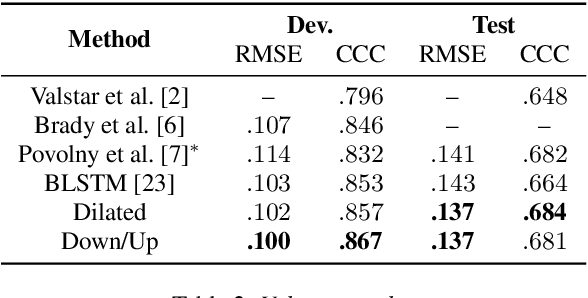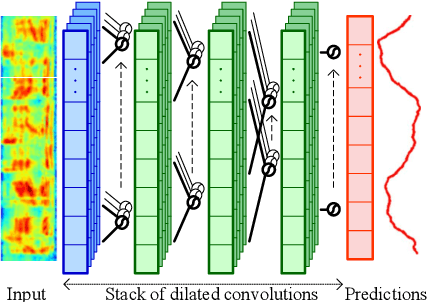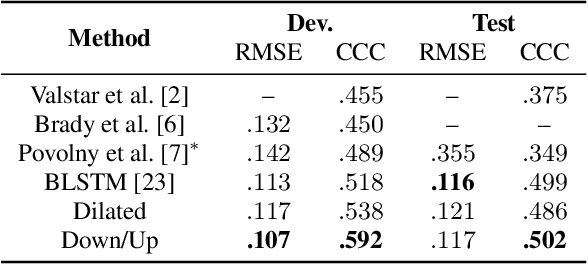Melvin McInnis
Capturing Long-term Temporal Dependencies with Convolutional Networks for Continuous Emotion Recognition
Aug 23, 2017



Abstract:The goal of continuous emotion recognition is to assign an emotion value to every frame in a sequence of acoustic features. We show that incorporating long-term temporal dependencies is critical for continuous emotion recognition tasks. To this end, we first investigate architectures that use dilated convolutions. We show that even though such architectures outperform previously reported systems, the output signals produced from such architectures undergo erratic changes between consecutive time steps. This is inconsistent with the slow moving ground-truth emotion labels that are obtained from human annotators. To deal with this problem, we model a downsampled version of the input signal and then generate the output signal through upsampling. Not only does the resulting downsampling/upsampling network achieve good performance, it also generates smooth output trajectories. Our method yields the best known audio-only performance on the RECOLA dataset.
 Add to Chrome
Add to Chrome Add to Firefox
Add to Firefox Add to Edge
Add to Edge